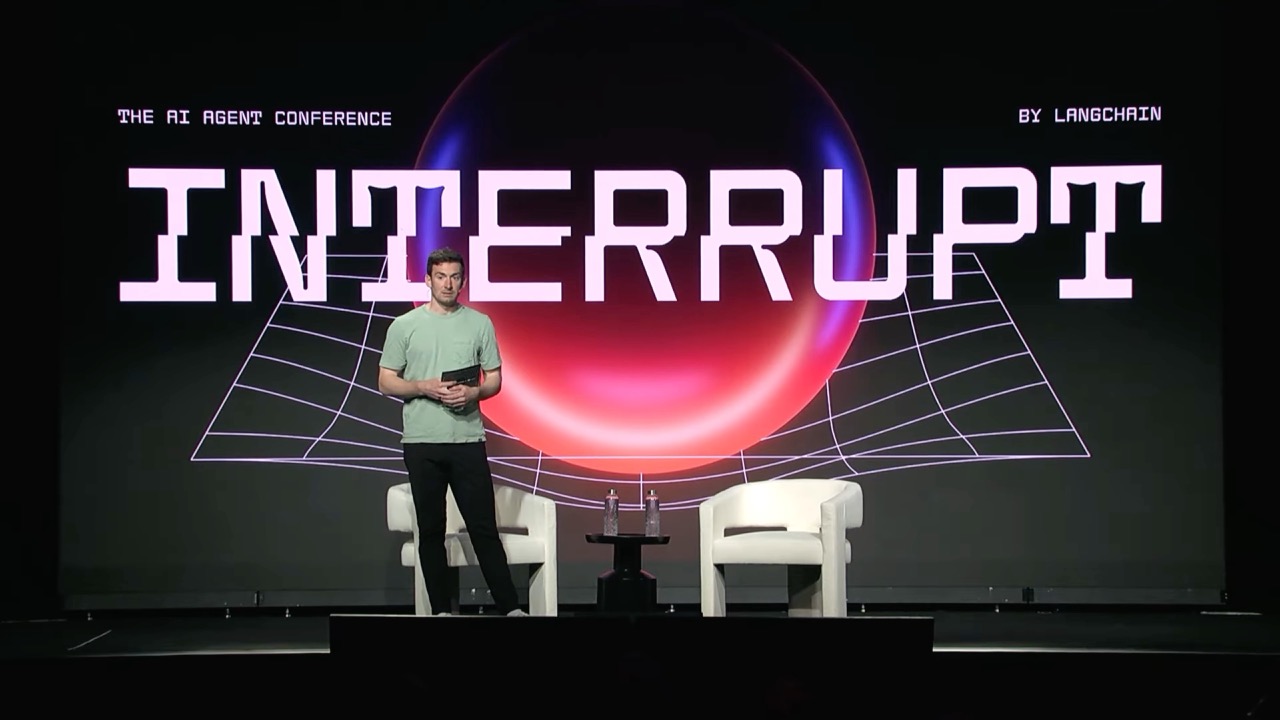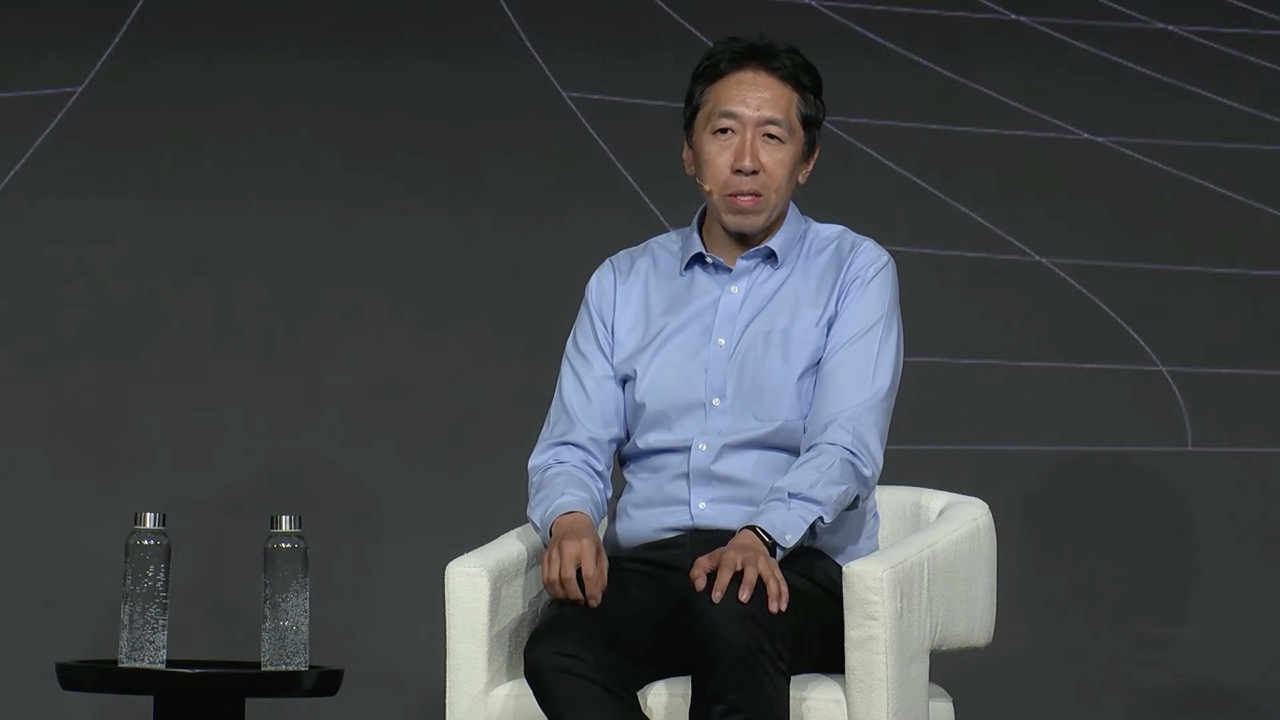AI Summary
Andrew Ng argues that in the rush to build AI agents, developers mistakenly prioritize complex autonomous systems over simpler, linear workflows. He advocates for starting with straightforward business processes that can be broken into sequential steps, leveraging existing "Lego brick" tools, and implementing quick, iterative evaluation systems. Ng also highlights the underexplored potential of voice applications, the importance of the Model Context Protocol (MCP) for data integration, and the transformative impact of AI-assisted "vibe coding."
In the rush to build the next generation of AI agents, most developers are making the same fundamental mistake. They're starting with complex, autonomous systems when they should be building simple, linear workflows first.
That's the surprising insight from Andrew Ng, the Stanford professor who co-founded Coursera, during a recent fireside chat with LangChain CEO Harrison Chase. While the AI community buzzes about fully autonomous agents, Ng argues that the real opportunities lie in something far more mundane: straightforward business processes that can be broken down into sequential steps.
The Reality Check: Most AI Agent Opportunities Are Linear
Ng's perspective cuts against the prevailing wisdom in Silicon Valley, where organizations are rushing to deploy multi-agent systems and fully autonomous AI programs. Instead, he sees the biggest business value in workflows that look almost boring by comparison.
I see a lot of opportunity in fairly linear workflows or linear with just occasional side branches. A lot of businesses have people looking at a form on a website, doing web search, checking some database to see if there's a compliance issue. It's kind of copy, paste, maybe do another web search, paste in a different form.
This insight reflects what's actually happening in enterprise AI adoption. While headlines focus on sophisticated autonomous systems, 90% of hospitals are expected to adopt AI agents by 2025, primarily leveraging predictive analytics and automation for routine tasks rather than complex decision-making.
The Lego Brick Philosophy: Building with Existing Tools
Ng's approach to AI development centers on what he calls the "Lego brick" philosophy. Instead of building everything from scratch, successful AI teams assemble solutions from existing tools and frameworks.
I think of these tools as being akin to Lego bricks, and the more tools you have is as if you don't just have purple Lego bricks, but a red one and a black one and a yellow one and a green one. As you get more different colored and shaped Lego bricks, you can very quickly assemble them into really cool things.
This philosophy explains why companies like LangChain have gained such traction. Rather than reinventing the wheel, developers can combine existing components for:
- Retrieval-augmented generation (RAG) systems
- Chatbot frameworks
- Memory management systems
- Evaluation frameworks
- Guardrail implementations
The key insight is that having a diverse toolkit allows teams to solve problems faster. "Someone that's done that before could say, 'Oh, well, we should just build evals this way, use the LLM as a judge and go through that process to get it done much faster,'" Ng noted.
The Evaluation Problem: Why Teams Avoid Building What They Need Most
One of Ng's most pointed observations concerns evaluation systems. Despite widespread discussion about the importance of AI evaluation, most teams still avoid building them.
Even though people talk about evals, for some reason people don't do it. People think of writing evals as this huge thing that you have to do. I think of evals as something I'm going to throw together really quickly, in 20 minutes.
Ng's approach to evaluation is iterative and practical:
- Start with a simple eval that barely helps
- Use it to catch specific regressions
- Incrementally improve based on what breaks
- Complement, don't replace, human evaluation
This mirrors broader software development practices where teams start with basic tools and refine them over time, rather than trying to build perfect systems from the start.
The Voice Revolution: Why Latency Changes Everything
While much of the AI agent discussion focuses on text-based systems, Ng sees voice applications as a major underexplored opportunity. The key difference isn't just modality but user psychology.
A text prompt is kind of intimidating for a lot of applications. People can use backspace, so people are just slower to respond via text, whereas for voice, time rolls forward, you just have to keep talking.
This creates fundamentally different interaction patterns. Users feel less pressure to deliver perfect responses when speaking, leading to more natural information gathering. However, voice applications introduce new technical challenges, particularly around latency requirements.
Ng's team discovered creative solutions to manage user expectations during processing delays, including pre-responses like "Huh, that's interesting" or "Let me think about that" to mask system latency. For customer service applications, they found that playing background noise of a contact center made users more accepting of brief delays than dead silence.
The MCP Revolution: Standardizing the Plumbing
The Model Context Protocol (MCP), recently adopted by both Anthropic and OpenAI, represents what Ng sees as a crucial step toward solving one of AI development's biggest pain points: data integration.
For a lot of us, we spend so much time on the plumbing. The AI, especially reasoning models, are pretty intelligent. They could do a lot of stuff when given the right context. But I find that my team spends a lot of time working on the data integrations to get the context to the LLM.
MCP aims to standardize these integrations, moving from an n×m problem (where every model needs custom integration with every data source) to an n+m solution (where models and data sources implement a standard interface). However, Ng acknowledges the protocol is still early. Current challenges include:
- Unreliable MCP server implementations
- Clunky authentication systems
- Need for hierarchical discovery mechanisms
- Limited scalability for complex APIs
The Coding Revolution: Why "Vibe Coding" Isn't Just Vibes
Despite the playful name, what developers call "vibe coding" (AI-assisted development where humans barely look at generated code) represents a serious shift in how software gets built. Ng pushes back against the frivolous implications of the term.
When I'm coding for a day with AI coding assistance, I'm frankly exhausted by the end of the day. This is a deeply intellectual exercise.
The phenomenon has enabled Ng to work more effectively in languages outside his expertise. As a stronger Python developer, he now writes significantly more JavaScript and TypeScript code than before, leveraging AI assistance while applying his debugging and architectural knowledge.
This trend contradicts advice suggesting people shouldn't learn to code because AI will automate programming. Instead, Ng sees historical precedent suggesting the opposite. "When we went from punch cards to keyboards and terminals, or when programming went from assembly language to COBOL, there were people arguing we don't need programmers anymore. When it became easier, more people learned to code."
The Startup Success Formula: Speed and Technical Knowledge
From his experience running AI Fund, a venture studio that exclusively invests in companies they co-found, Ng has identified two key predictors of startup success that go against conventional wisdom.
The number one predictor is speed. "I see a lot of people that have never seen the speed with which a skilled team can execute," he said. "It's just so much faster than anything that slower businesses know how to do."
The second predictor is technical knowledge, which Ng considers more rare and valuable than traditional business skills. "The knowledge that's really rare is someone that really understands how the technology works, because technology has been evolving so quickly."
While go-to-market skills remain important, that knowledge is more widely distributed. The scarcest resource is deep technical understanding that enables teams to make good architectural decisions and avoid common pitfalls.
The Universal Coding Mandate: Why Everyone Should Learn to Program
Perhaps Ng's most provocative stance is his belief that everyone should learn to code, regardless of their role. At AI Fund, this isn't just philosophy but practice.
Everyone in AI Fund, including the person that runs our front desk, and my CFO and the general counsel, everyone actually knows how to code. It's not that I want them to be software engineers, they're not. But in their respective job functions, many of them by learning a little bit about how to code are better able to tell a computer what they wanted to do.
This approach reflects a broader trend where 70% of new enterprise applications will use no-code or low-code technologies by 2025, democratizing development capabilities. Understanding programming fundamentals helps people interact more effectively with AI systems and automation tools.
The Path Forward: Practical Steps for AI Agent Builders
For teams looking to build effective AI agents, Ng's advice centers on practical fundamentals rather than cutting-edge techniques:
- Start simple: Begin with linear workflows before attempting complex autonomous systems
- Build evaluation systems early: Even basic evals help catch regressions and guide development
- Focus on speed: Rapid iteration beats perfect planning
- Leverage existing tools: Assemble solutions from proven components rather than building from scratch
- Learn the fundamentals: Understanding how technology works enables better decision-making
This pragmatic approach contrasts sharply with much of the hype around AI agents, but it reflects the reality of what actually works in production environments. As traffic to retail sites from AI-powered chatbots increased 13X during the 2024 holidays, the value clearly lies in practical applications rather than science fiction scenarios.
Ng's vision for AI agents emphasizes gradual capability building rather than revolutionary breakthroughs. Multi-agent systems and complex autonomous workflows will certainly develop, but the immediate opportunities lie in automating routine business processes with reliable, measurable outcomes.
Recent Posts


